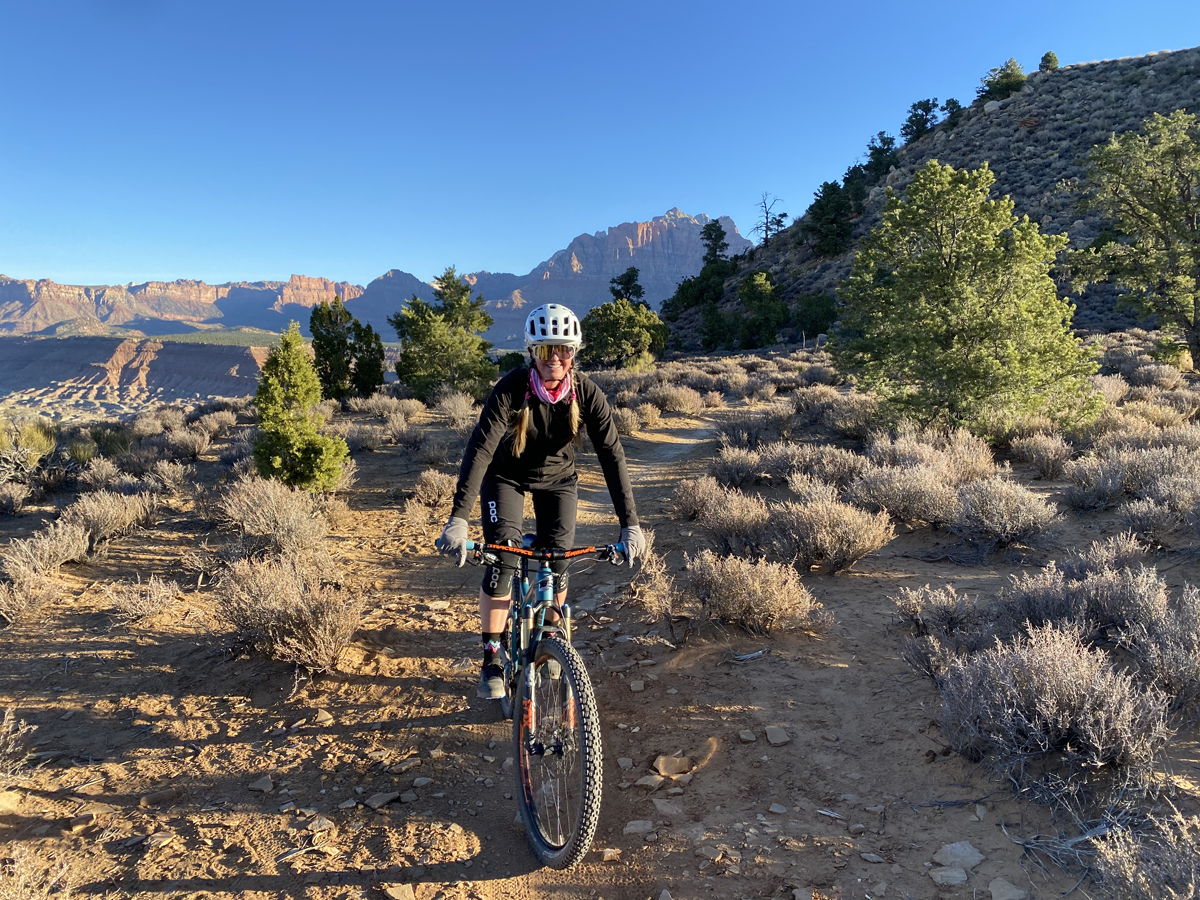By Erica Tingey — Proper hydration while mountain biking is critical for nutrient and oxygen delivery, organ and tissue function, temperature regulation, joint lubrication, and energy production. Just about every biological reaction in your body requires water! Athletes must take extra care to ensure they get enough water because we lose water through sweating and increased energy demands. I’ve outlined some tips for staying hydrated while mountain biking.
Drink Water Before Your Ride
Drink plenty of fluids throughout the day, and try to drink half a liter (~16 ounces) a couple of hours before your ride. Caffeinated beverages like coffee and tea used to get a bad rap because they were rumored to be dehydrating; however, current evidence suggests this isn’t the case. In fact, caffeine can help promote metabolic processes that produce energy to fuel your ride.

Bring Enough Water on Your Ride
How much water you need for a ride will depend on many factors, including the length and difficulty of your ride, the ambient temperature, and how much you sweat. A good place to start is to aim for about half a liter (~16 ounces) for cooler weather and up to one liter (~33 ounces) for warmer weather every hour. Take a couple of sips every fifteen minutes or so. After your ride, write down how much you drank (add them to your phone notes, Strava, or a notebook) to help you plan for the next ride.
Some riders determine their approximate sweat rates at various temperatures by weighing themselves on a digital scale before and after a one-hour ride (this is only accurate if you don’t eat, drink, or urinate during the ride). You should aim to replace at least 75% of the water you lose to sweat. You don’t want to add unnecessary weight by bringing far too much water but err on the side of bringing more than less. For longer rides, consider bringing a hydration bladder carried in a backpack or fanny pack.
Replenish Electrolytes
Replenishing electrolytes (sodium, potassium, calcium, and magnesium) is critical—especially for rides that last more than an hour. I like the convenience of pre-measured electrolytes in “Ultima,” which are available at Whole Foods or Amazon.
Signs of Dehydration
Some indicators of losing fluids too rapidly include dizziness, headache, nausea, lack of sweating, dry lips or eyes, thirst, muscle cramps, and a pounding heartbeat. Dehydration can become very serious very quickly. If you think you’re dehydrated, stop and replenish your fluids and electrolytes. Call for help if needed.
Prepare for Emergencies
Running out of water can quickly become an emergency, especially if you are stranded in the backcountry. Consider stashing a lightweight LifeStraw, mini filter, or water treatment tablets in your first-aid kit for greater peace of mind.
Staying hydrated will help you optimize performance so you can focus on having fun on the trails. Stay safe!







